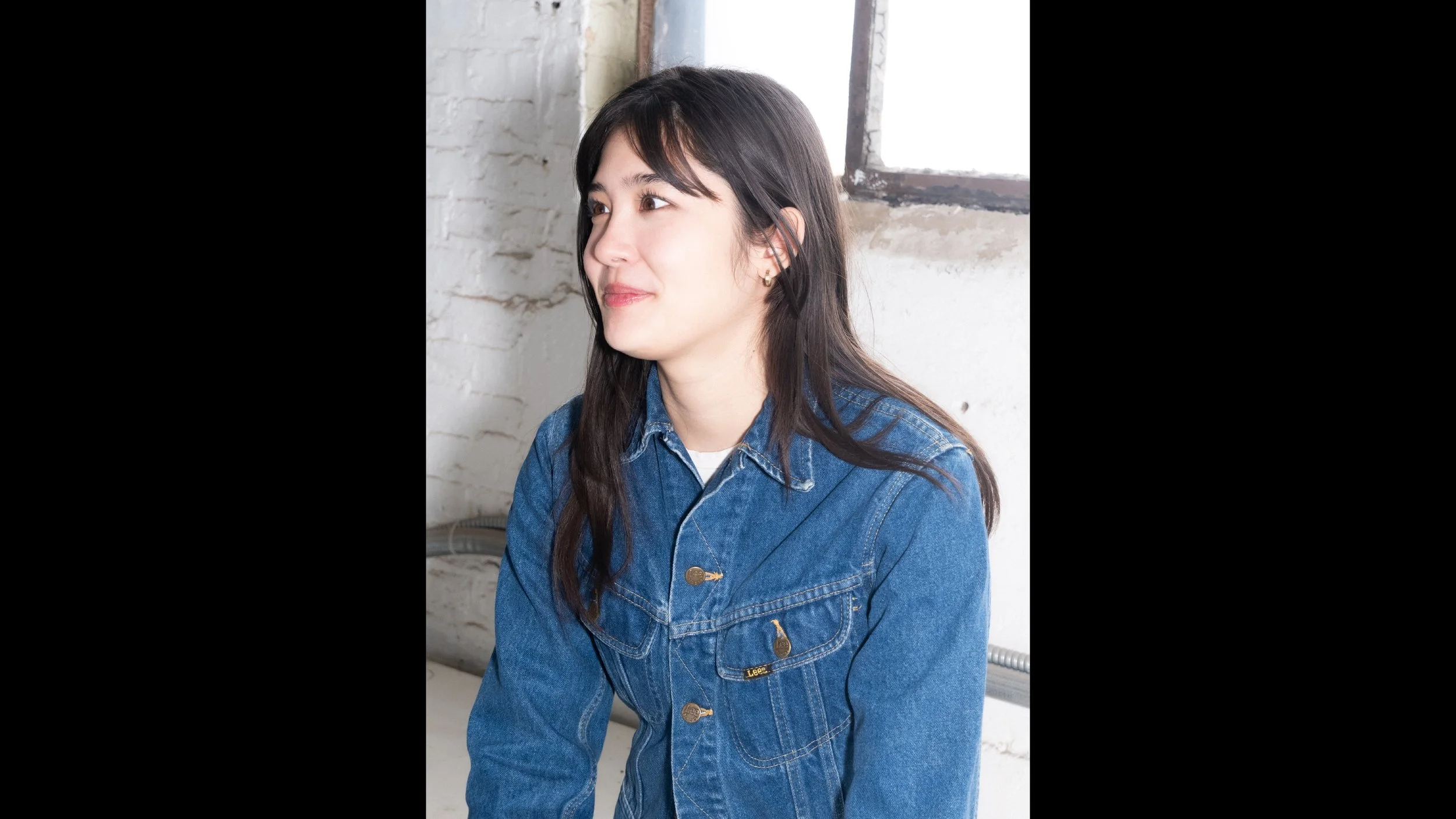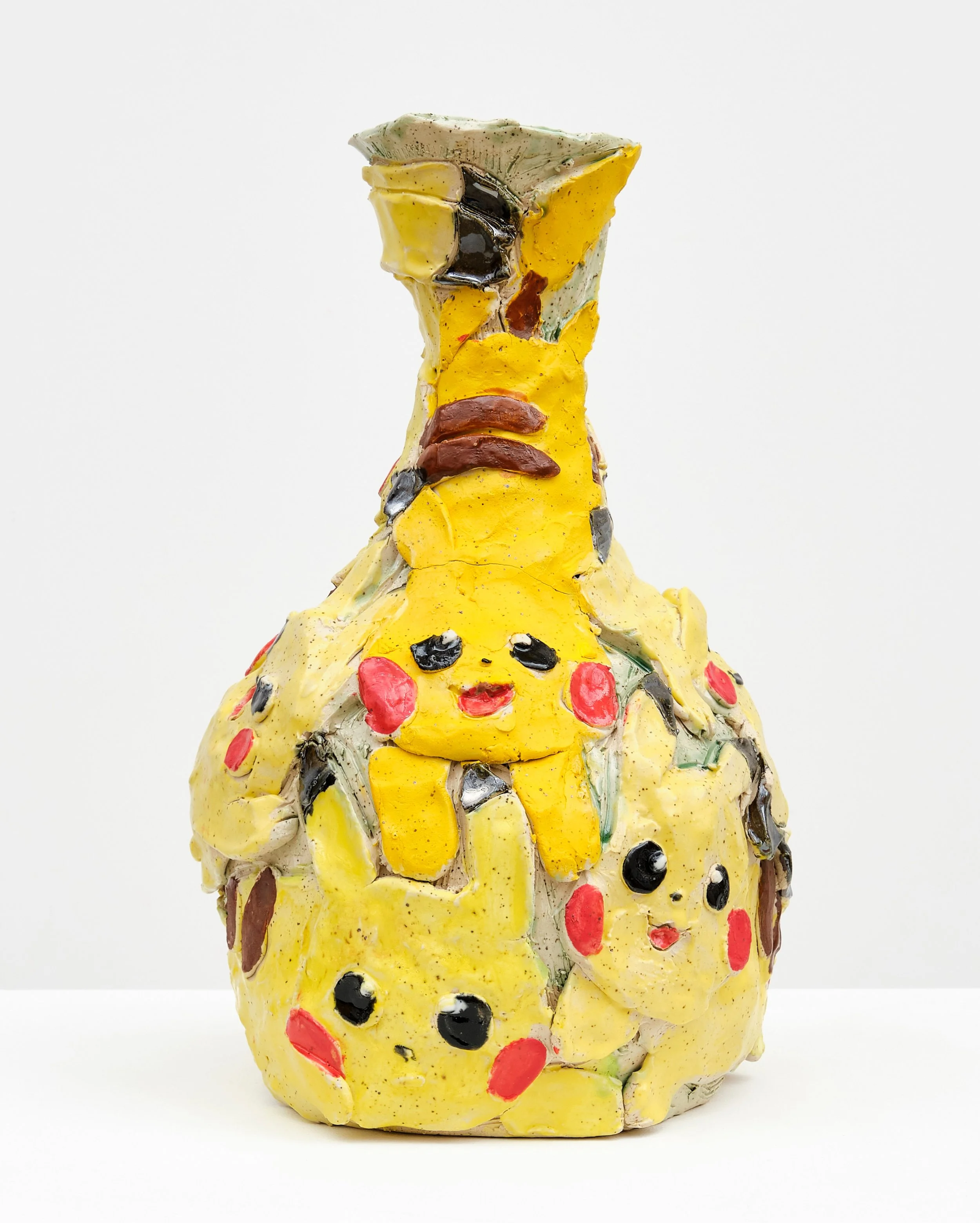EMILY AND FRIENDS
Interviewed Feb 2025. Photographed by James Kramer.
Emily welcomed us into her Chicago studio, where we talked about perfectionism, the tricky politics of writing about your own work (“it’s like showing your butt”), the problematic history of cartoons, and what exactly a Clusterfuck Moon Jar is. Her ceramics practice is grounded in historical critique, blending her Korean heritage with a sharp lens on how craft and cuteness have long been used to obscure violence. Drawing inspiration from French Sèvres porcelain and Japanese Kawaii culture, Emily challenges how beauty, purity, and charm have been weaponized to erase colonial histories. By reimagining familiar, inviting imagery, her work subverts the power structures hiding behind those aesthetics. She’s shown her work at The Pit in LA, Lefebvre et Fils in Paris, and Gaa Gallery in Germany, and recently completed a residency in France. Outside the studio, Emily teaches ceramics to both kids and adults, generously sharing her knowledge with the next generation of ceramists.
TRIPLE3: Can you explain what weaponizing craft means to you and what your method is?
EMILY YONG BECK: I guess it’s about not really caring about traditional pottery or the “right” way to make ceramics. I’m making vessels that are political, even if they don’t look that way at first. I try to use the images on my pots to make people ask, “Why is this here?” or “Why doesn’t this feel right?” I know not everyone’s gonna see a pot with Pokémon on it and think it’s political. Some people will just go, “Oh, cool, it’s Pokémon,” and that’s fine too. One of the hardest parts of being an artist is doing what feels right and not worrying if someone doesn’t get it. Not everyone’s gonna know I spent forever thinking about why Astro boy is political, or how it connects to stuff like Japanese and American imperialism.
Pikachu (2025) Glazed Ceramic, 13.5” x 8.5” x 8.5”, 34.29 x 21.59 x 21.59 cm
Felix Pot (2025) Glazed Ceramic, 16” x 12” x 12”, 40.64 x 30.48 x 30.48 cm
Doraemoon (2025) Glazed Ceramic, 13” x 8” x 8”, 33.02 x 20.32 x 20.32 cm
3: Through your practice, how did you begin addressing this rich history and intersectionality through this medium?
E: Honestly, with ceramics, you’re automatically tied to history just by making stuff out of clay. Even though I’m not about perfect craftsmanship, I think you can’t ignore the history behind the materials and the medium. At first, I got really interested in French porcelain and European ceramics. Porcelain used to be worth more than gold because China guarded the recipe like crazy. They kept it secret, and Europe literally kidnapped and tortured Chinese people trying to steal it. It’s wild to me how such a beautiful, romantic Rococo art form is built on violence and exploitation. Then there’s Versailles, which fascinates me because it’s not the glamorous palace people think it is. It was built because Paris was a filthy mess, and when people fled there, the palace was basically a zoo with wild animals pooping everywhere, people peeing on walls, and everyone carrying potpourri under their noses to mask the stench. Yet, when you look at art or films about Versailles, it’s all romanticized, none of that gross reality shows up. That’s where my interest in propaganda and history started. But then I asked myself, “Why am I so obsessed with French porcelain? What about my own culture?” Korea has this intense history, especially with Japan’s occupation. Japan kidnapped Korean potters and forced them to work in Japan, claiming their pottery as Japanese national art. Some traditional Korean techniques, like the carving style called Sangam, known in Japan as Mishima, are actually Korean but are credited as Japanese because of that history. As a Korean artist, I feel a responsibility to learn about Korean pottery and reference it in my work. It’s about reclaiming that history, understanding it, and also confronting it, especially as someone who consumes Japanese media but knows the backstory. It’s complicated, but that tension is important to me.
3: How do you define cute washing?
E: Using cuteness to cover up really dark stuff. For Japan, in particular, people don’t really know about their imperialistic history, especially outside of Asia. But in countries like China, the Philippines, and South Korea, it’s very real because they lived it firsthand. My grandma was alive during the Japanese occupation, so for me, that timeline is super important to keep in mind. Most people also don’t know that Japan isn’t allowed to have a real military because of how ruthless they were. They did horrific human experiments, like switching limbs on people just to see what would happen, stuff that’s comparable to Nazi experiments. And then there were comfort women, who were basically enslaved and constantly raped. Japan and Germany actually exchanged info on these experiments. Sometimes Germany even thought Japan’s stuff was too extreme. The thing is, with Germany, there’s no “cute washing.” Their history is very openly ugly and acknowledged. But Japan? Everything is wrapped up in kawaii. Cute anime, cartoons, pop culture, which totally hides all that violent history. Plus, after the war, Japan burned a lot of documents to cover it up, unlike Germany. There are still right-wing groups in Japan who deny the war’s severity and refuse to compensate the comfort women. It’s like soft power, conquering through media and culture instead of violence. That’s why shows with cute heroes, like Ash Ketchum, got so popular, because it’s this sanitized version of Japan. My grandma hid under floorboards while Japanese soldiers stabbed through them. Koreans couldn’t speak their language or use their real names, they had to become “Japanese.” And the same with China, massive violence. Also, America’s not innocent, they took some of Japan’s human experiment research after the war instead of prosecuting them fully. So yeah, it’s all very messed up.
Read more of Emily’s interview in Triple Issue 2




